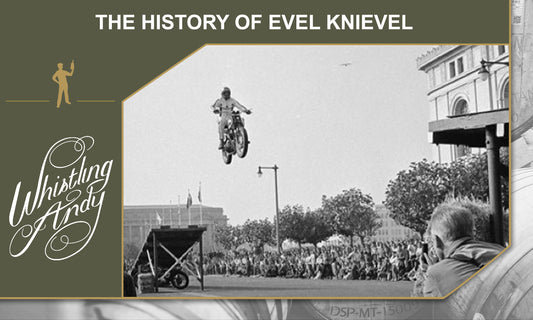Montana might not be the first place that comes to mind when you think about moonshine and bootlegging but, believe it or not, the Big Sky State has a long and fabled history with both. Today, the state is home to numerous distilleries that produce some of the best, highest-quality moonshine the world has to offer, but moonshine production is not a new phenomenon in Montana. In fact, people have been making the high-octane spirit in Montana since before Prohibition, and even before it was a state!

Though not as well-known as some of its southern counterparts, Montana played an important role in both the production and illegal smuggling of alcohol during the Prohibition era. That history runs straight through the heart of the Montana-Canadian border near Great Falls, which came to be known as the Bootlegger Trail. Because alcohol production was legal in Canada when it was illegal in America and due to Montana’s easy access to the neighboring country with a border that was lightly guarded at best, moonshine and other illegal alcohol was able to make its way into the state and beyond.
Though it was dangerous on multiple levels, there was no shortage of players in the game of running moonshine from Canada to Montana during the Prohibition era. In fact, the business was beyond booming, helping to flood the sparsely-populated state and the rest of the country with the booze it was craving and unable to obtain.
Birth of the Bootlegger Trail
While it was outlawed at the federal level in 1920, Montana had already voted for Prohibition in 1916. Starting on December 31, 1918, alcohol became illegal throughout the state. Despite Prohibition laws, Montanans and Americans did not seem to lose their taste for alcohol, and the demand for it did not appear to wane whatsoever. Though it was also illegal to consume alcohol in Canada at this time, it was not illegal to produce it for exporting purposes

While there was plenty of running of spirits like beer and other legally produced booze from Canada into Montana, it was more lucrative for smugglers to transport higher alcohol by volume spirits because smugglers could bring in less product while charging a higher, premium price. In fact, a full carload of alcohol could bring in up to $2,500 at a time when an average yearly salary was about $1,225! This helped moonshine become the king of smuggled spirits during Prohibition.
The demand for moonshine and the potential payoff far outweighed the fact that it could be dangerous to consume due to the unsafe or unsanitary way it was often made; not to mention the potential legal repercussions if you were caught. And so, the Bootlegger Trail between Canada and Great Falls, Montana was born.
Hopping Up Hot Rods
The penalties for smuggling moonshine tended to be greater than the smuggling of its lower-alcohol counterparts, so getting caught was something a bootlegger tried to prevent at all costs.

One key aspect of being a successful moonshine smuggler on the Bootlegger Trail was having a vehicle that was able to outrun the authorities. At the time, the Ford Model T was overwhelmingly the car driven by police officers and other government agents across the country during the Prohibition Era, and it packed a respectable punch when it came to power, making it more difficult for smugglers to make a clean getaway.
In response, smugglers turned to touring cars which could outrun the Model Ts driven by authorities. Bootleggers would often soup up these cars, turning them into what would evolve into modern-day hot rods. While several different types of cars were used for smuggling, the vehicle most conducive to the demands of the job was the Ford Model A because of its powerful flathead V8 engine and the ample amount of storage room provided through its oversized trunk. They were also fairly simple to modify, which was a necessity.
Today we think of modified cars as being flashy, but during Prohibition, flashy cars would have been more apt to draw attention to the car and driver. Any modifications made to smuggling vehicles needed to look stock even if they were far from it.
Some of the modifications commonly made to these coups included:
- Making them able to burn more fuel at a faster pace.
- Finding ways to give them more horsepower to make them quicker.
- Creating secret compartments to store more moonshine.
- Stiffening the suspension so that even when weighed down by close to half a ton of cargo they appeared to be near-empty.
- Frequently stealing and changing out license plates to prevent law enforcement from being able to track them down.
Packing Fire Power
Bootleggers between Canada and Montana had to pack more power than just what was under their hoods; they also had to have firepower for protection and intimidation purposes.

Shotguns, both stock and modified, and automatic firearms were standard equipment amongst smugglers.
As the moonshine smuggling business became more lucrative, it also became more dangerous. Not only did smugglers on the Bootlegger Trail have to arm themselves against law enforcement agents who set out to foil their business, but they also needed to protect themselves against an even more formidable foe: other moonshine smugglers who did not want to share their business.
Running of Moonshine from Canada to Montana During Prohibition: Moonshine Outlaws
The business of running moonshine and other illegal alcohol across the U.S.-Canadian border into Montana during Prohibition was a dangerous, exciting, and lucrative business.

Though not widely thought of as the hub of smuggling booze during this time period, the Bootlegger Trail did, in fact, make a name for itself in infamy.
From souped-up hot rods to the need for weapons thanks to Americans’ insatiable thirst for booze, the Bootlegger Trail made a mark on the history of Montana and the nation for producing many moonshine outlaws during the Prohibition era.





